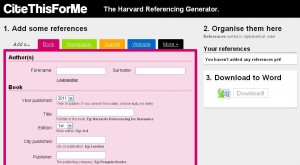1. Introduction
“Tell me and I forget,
Teach me and I may remember,
Involve me and I learn. “
-Benjamin Franklin
Textbook is one of the main instruments of educating and preparing students for the examinations. On the first or second day of class, teachers often engage students in some kind of get-to-know each other game or activity. Classmates might interview each other and then introduce their partner to the rest of the class. Maybe students will write two true statements and one false statement about themselves. Their classmates will have to guess which statement is false. During the semester, these students will be sitting side-by-side, working together in groups, and struggling together on assignments and tests. They will see each other day in and day out. Most teachers realize that it makes sense to help students to get to know each other and to build a sense of rapport from the beginning of the semester. But day in and day out, both in class and out, the students will have another inseparable companion—their textbook. Unfortunately, many teachers neglect to introduce their students to their textbook. The only introduction the students may get is, “Open your textbook to the first chapter. We’re going to begin with the first reading.” The students dutifully open their textbooks and jump in. For the rest of the semester, they open their texts to whatever page the teacher assigns them. In these cases, the textbook too often remains a teacher’s tool. Instead, the students need to build a friendly relationship of their own with their textbook. Whereas they may have access to their teacher only during class time and during his or her office hours, the textbook is always available to the students. To maximize independent learning, the students need to know what their textbook is for and how to retrieve information from it. Teachers need to provide students with this information. It is also likely that a textbook will outlast its relevance because of changes in the language policy of the community for which it was written.
 2. Explanation about Choosing the Textbook
2. Explanation about Choosing the Textbook
Any textbook should be used judiciously, since it cannot cater equally to the requirements of every classroom setting. The first thing you should do to introduce the textbook to the students is to explain why you chose this textbook for the class. Point out what you like about the textbook. You can tell the students something about the author and his or her reputation in the field. Maybe you feel that it is just the right level—the content is accessible, but challenging. Maybe you like the way that the information presented later in the textbook builds on information in the earlier chapters. Let the students know that you have a good relationship with the textbook, so that they will feel positive about developing their own relationship with it. Show your excitement! If you did not choose the textbook for the course, you can still explain why this textbook is good for the course. What needs or weaknesses of the students does it address? Where does it start with the students and where will it take them by the end of the semester? If you have more than one textbook for the course, make sure you introduce the students to all of the textbooks.
3. Guidelines for Using the Textbook
The teacher should provide appropriate guidance for the teacher of English who is not a native speaker of English. The untrained, or partially trained, teacher who does not possess native-like control over all aspects of English should not be left in any doubt concerning the procedures proposed by the textbook. Otherwise, he or she may, for example, teach only the meanings of the minimal pair ‘live/leave’, completely ignoring the writer’s intention that these items should be used for pronunciation practice. The next step is letting the students know how you plan to use the textbook during the course. Maybe you will work your way through the entire book. Maybe you will only have time to cover the first half of the book. If this is the case, and if the students are familiar with the book, they will be able to access the remainder of the book if they so choose after the course has finished. If you have more than one textbook for a course, or if you plan to supplement the textbook with other materials, it is important to address how you will do this. What benefits does one text bring? How do the other text and other materials either build on these benefits or address other needs not covered by the first text?
4. Informing the Organization of the Textbook
Finally, you must orient the students to the organization of the textbook. If you “dive” into activities in the textbook without first helping students to understand the textbook’s organization, the students have difficulty grasping the context and even purpose of the activities. In other words, they lose sight of the proverbial forest for the trees. It rarely occurs to them to take time on their own to sort out the organization of the textbook. After spending several weeks or months using the text, some students may deduce the plan of organization, but this becomes even more difficult if the teacher skips around in the text. The author designed the textbook with a certain idea in mind. You should help students discover this idea. To engage students actively in the learning process, I always find it best to give them a page of questions to answer about the book. Simply explaining the book’s organization to the students defeats the purpose of the students developing their own relationship with the textbook. If you tell them the plan of organization of the book, you remain the intermediary in the relationship. Step back, and let the students interact with their books. I do this during the first week of class after I am sure that all or almost all of the students have purchased their textbooks. I put the students in pairs or groups of three, and these are the questions that I give to them. I think of it as an “interview with the book” much like they might interview a classmate at the start of the semester. These questions are for English for Today for Classes 11-12 written by National Curriculum and Textbook Board (NCTB).
Getting Acquainted with Your Textbook
Part 1: Answer these questions about your textbook.
- What is the name of your textbook?
- When was your textbook published?
- How many pages does your textbook have? (Don’t count the “Text Credit” pages or the “Task Index” pages.)
- How many units are in your textbook?
- What are the names of each of the units?
- How many chapters are in each unit?
- What is the first activity in each unit?
- How many readings are in each chapter?
- Does each reading have a title?
- Does each reading have a picture?
- What activity comes before each reading?
- What are two kinds of activities that come after the readings?
Part 2: Turn to p. xix, “To the Student.” This is a message the authors have written to you. Scan this message and answer the following questions.
- Where have the readings in this book been taken from?
- How are texts from college textbooks different than other kinds of texts?
- Where do the topics in this book come from?
Part 3:
- .Give introductory guidance on the presentation of language items and skills (GENERAL).
- Suggest aids for the teaching of pronunciation: e.g. phonetic system (SPEECH).
- Offer meaningful situations and a variety of techniques for teaching structural units (GRAMMAR).
- Distinguish the different purposes and skills involved in the teaching of vocabulary (VOCABULARY).
- Provide guidance on the initial presentation of passages for reading comprehension (READING).
- Demonstrate the various devices for controlling and guiding content and expression in composition exercises (WRITING).
- Contain appropriate pictures, diagrams, tables, etc. (TECHNICAL).
After the students have answered all of the questions, we go over the answers together. At this point, I ask some critical thinking questions such as, “Why do you think the readings have pictures?” or “Why does the textbook include pre-reading activities?” While the questions on the handout lead the students to discover the organization of the textbook, these oral questions lead them to discover the rationale behind this organization. Since we cover only three or four units per semester, I also take this opportunity to hone in on those units. For example, I ask the students if they understand the names of the units that we are covering, and I ask them to predict some of the content we might encounter.
5. Benefits of Introducing the Textbook
Explaining to students why you chose the textbook, letting them know how you plan to use the textbook, and giving them an activity to get acquainted with their textbook will take a small amount of class time, but the rewards for both you and the students are great. First of all, I have found that students interact with materials in a much more positive way when they understand why you have chosen them and what benefits they will bring. As teachers and curriculum developers, we have a vision of what we are trying to accomplish, and we have broken down the steps for getting the students where they need to go. However, if we don’t share this with the students, and if the students are faced with activities and assignments without understanding how they fit into the larger goals, students can become impatient and discouraged. Moreover, orienting students to the organization of the textbook helps the class run more efficiently during the semester because the students will know how to find and retrieve information from the text. Moreover, this empowers the students to use the textbook on their own, both outside of class and after the semester ends. Finally, textbooks will be students’ constant companions throughout their academic careers. Helping them understand how to use and relate to a textbook gives them a skill that any successful student needs.
6. Conclusions
The teacher takes over where the textbook leaves off, and he or she must be able to assess its strengths and weaknesses. English language teachers need to be acquainted with the principles of textbook evaluation. They can be given practice in analysing textbooks in order to find out whether the organization of materials is consistent with the objectives of a given English language curriculum. When trainee teachers examine the selection of items of speech, grammar, and vocabulary in a textbook, and evaluate the way it presents reading and writing activities, they are at the same time improving their competence in the language and honing their skills as teachers. The textbook is a tool, and the teacher must know not only how to use it, but how useful it can be. Finding out will involve distinguishing between method in the use of printed materials, and method in face-to-face teaching. It will involve using discretion in adapting textual materials to the needs and interests of pupils, choosing only those materials and methods which are based on sound linguistic and pedagogical principles. The textbook will continue to play an important role, but it will not be a tyrant.
About the Author:
M. Enamul Hoque has been an English language teacher for over 15 years in different Government institutes in Bangladesh. He is an Instructor of ELT in the Education and Training Wing, Ministry of Environment and Forest. He has MA in English from Dhaka University, and M.Phil. in Applied Linguistics and ELT from the Jahangirnagar University, Dhaka. His Ph.D. is also in ELT & Testing. He has published widely on a variety of topics and is particularly interested in English language teaching and applied linguistics.
Post Footer automatically generated by Add Post Footer Plugin for wordpress.








